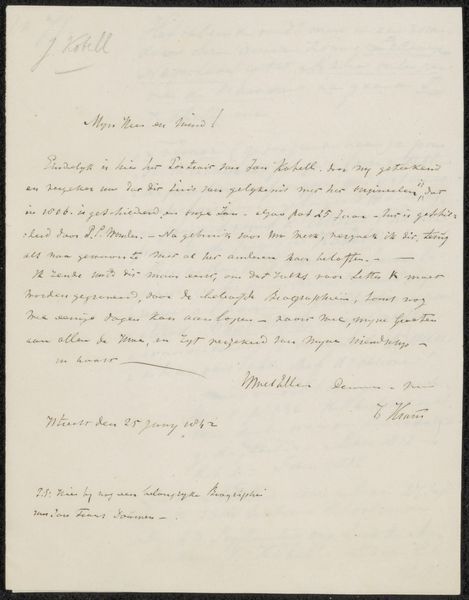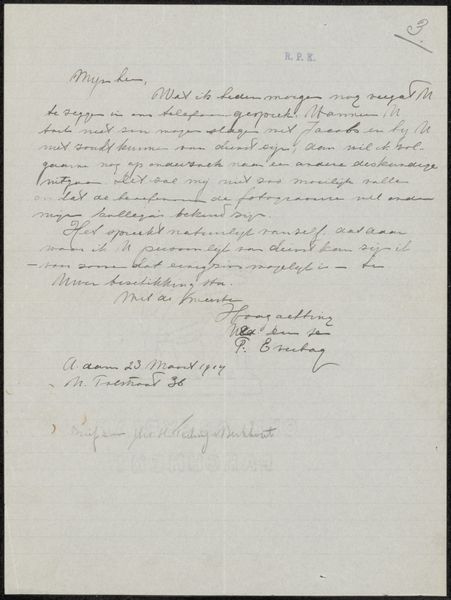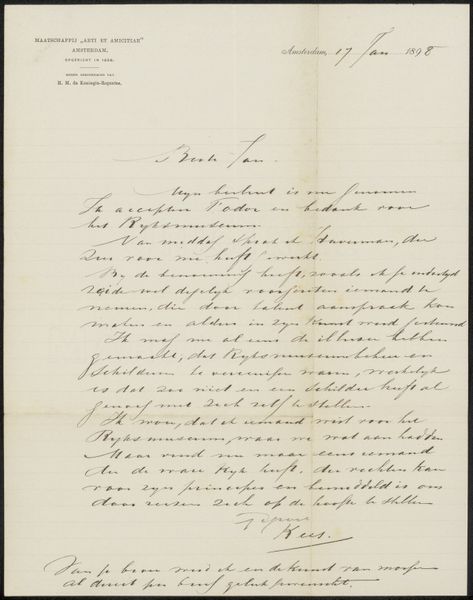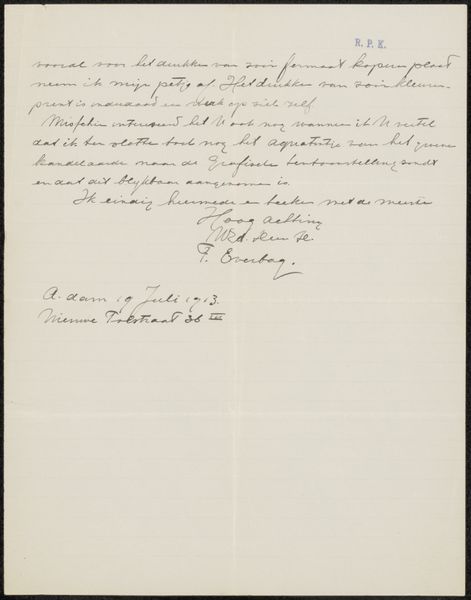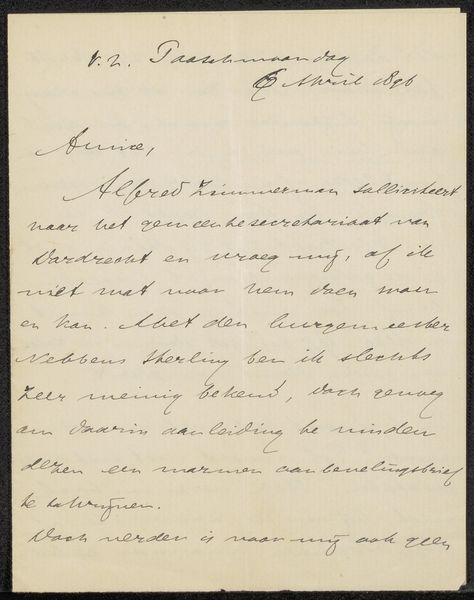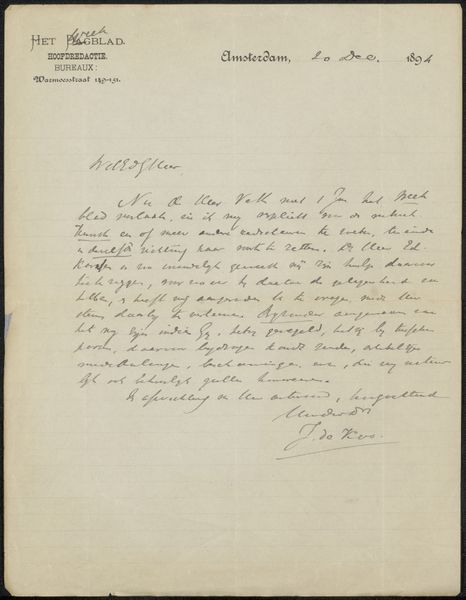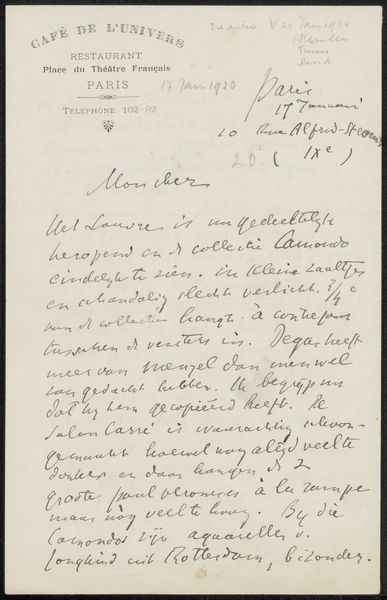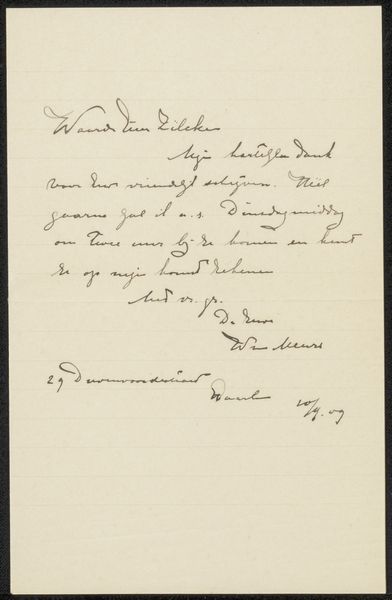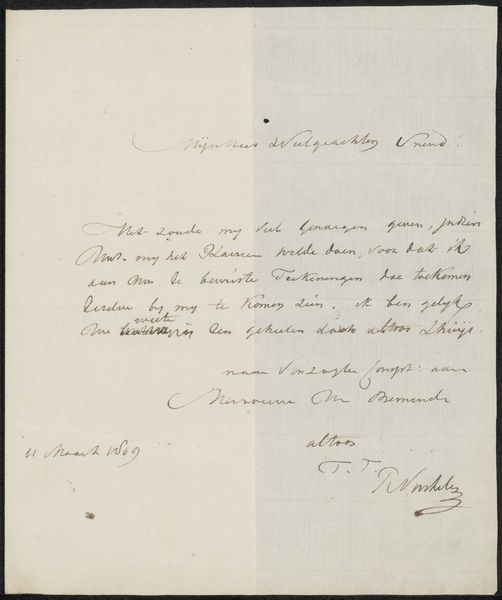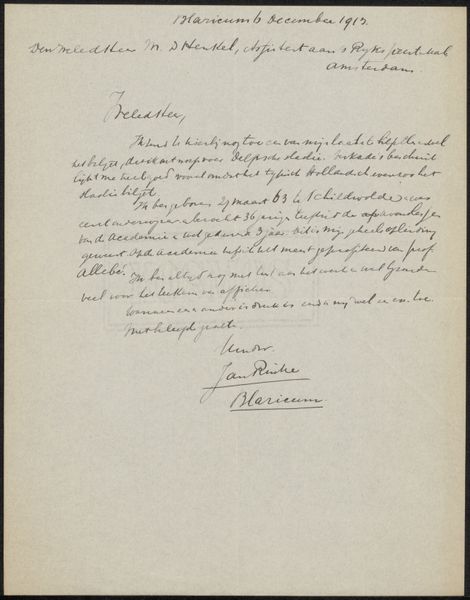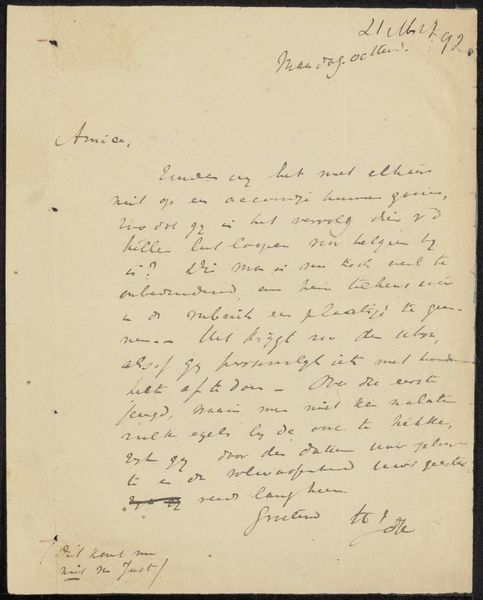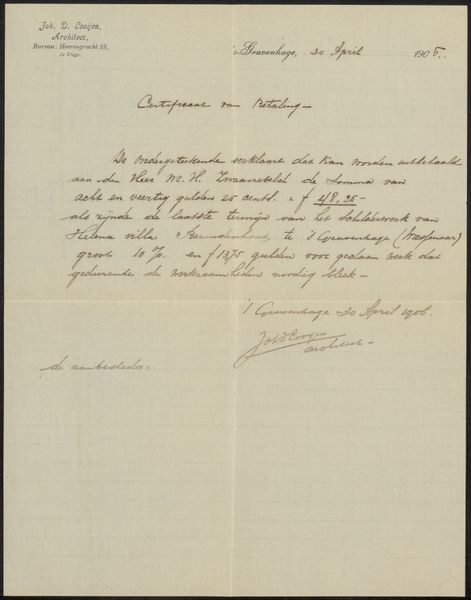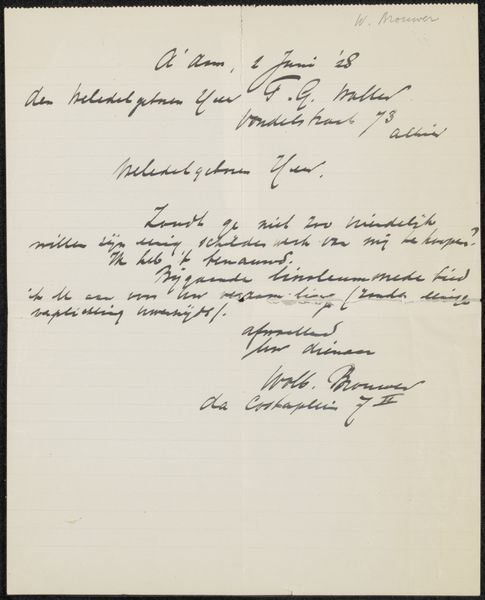
drawing, photography, ink, pen
#
portrait
#
drawing
#
dutch-golden-age
#
photography
#
ink
#
pen
Copyright: Rijks Museum: Open Domain
Editor: Here we have Willem Witsen's "Brief aan Philip Zilcken," likely from the 1890s. It's an ink drawing, really more of a letter. What strikes me is its immediacy. It feels incredibly personal and candid. How do you interpret this work, looking at it as an image? Curator: For me, this transcends a mere letter; it’s an intimate exchange visualized. Notice how the carefully chosen paper, the deliberate penmanship, these act as symbolic gestures, whispering of a cultivated friendship, a shared intellectual world. Consider the very act of writing—what does it communicate here beyond the text itself? Editor: That's interesting! The letterhead, the signature, they’re almost like little emblems. Curator: Exactly! These aren't simply practical details, they contribute to the visual language. The address on the letterhead establishes a place of commerce and creativity in two cities, while Witsen's elegant signature, set apart below, it functions almost as a painter's mark, branding the message. Does this make you consider any other forms of mark-making? Editor: Perhaps the overlaps with photography in that they are both about imprinting the world in paper. Curator: Precisely! In those years, photographers experimented with painterly techniques and blurring, while many painters approached the photographic image and sharp realism to their artworks, questioning the difference between media. The emotional weight this medium once carried continues in our contemporary understanding. Editor: So much is communicated beyond the literal words! It adds so many layers of emotion to the drawing. Curator: Indeed, the simple message expands into the domain of memory and personal significance. We've both now recognized those features within it.
Comments
No comments
Be the first to comment and join the conversation on the ultimate creative platform.
